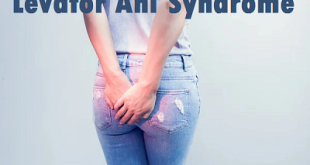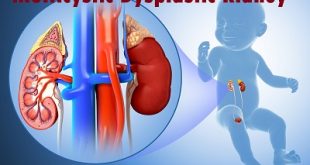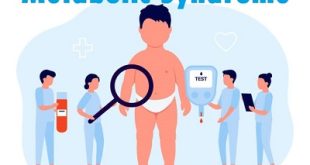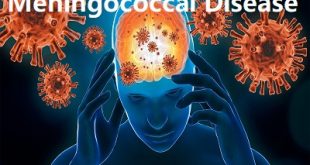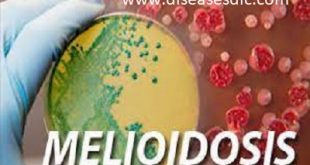Definition
Myalgia is the fancy term for the muscle pains we are so familiar with when overexerting ourselves. Some myalgia can be severe, and this can lead to the need for more in-depth treatment than merely resting a muscle. Some myalgia is chronic, doesn’t have a well-defined cause, and seems to get worse with time. In this case, treatment for chronic pain conditions is necessary.
In fact, myalgia is often a symptom of some other condition. For instance, fibromyalgia exhibits chronic muscle pain, but it is the pattern that this condition presents in that differentiates it from simple chronic myalgia. In addition, myofascial pain can also cause myalgia, but the presence of trigger points distinguishes that particular problem. Many conditions can cause chronic muscle pain, including some medications, so myalgia is often not a diagnosis in itself. It is often an indicator of some other process at work in the body.
Types of Myalgia
Muscle pain is classified into four major types. Let’s take a look at each of them.
Muscle Contractures
Muscle contracture is the least common form of muscle pain, but can be excruciating. It occurs due to forceful or sustained muscle contraction. The symptoms associated with muscle contracture are muscle pain, limited range of motion, and difficulty in moving hands, legs, and fingers. It can be treated through physical therapies, occupational therapies, medications (botulinum toxin), and surgery.
Muscle Cramps
A muscle cramp is the painful, involuntary contraction of the muscle. The main causes of muscle contraction are worn-out muscles, dehydration, muscle strain, low level of electrolytes such as magnesium, potassium, or calcium, less blood flow to the muscles, pregnancy, nerve compression, or holding the same position for a long time. It can be treated through stretching and massaging the muscles.
Muscle Stiffness
Muscle stiffness is a condition when the muscle feels tight and is difficult to move after rest. Sprains and strains are the most common causes of muscle stiffness. Muscle cramps, pain, soreness, fever, headache, swelling, and chest pain are some of the symptoms of muscle stiffness. It can be treated through massaging the affected areas, using ice or heat packs, stretching to enhance blood circulation, and bed rest.
Muscle Aches
Muscle aches (aching myalgia) is the last type of myalgia. Soreness and aches in the muscles can range from mild to severe. The common causes of muscle aches include stress, nutritional deficit, dehydration, sprains, strains, sleep deficiencies, extreme physical activities, infections, diseases, and hereditary conditions. The symptoms of muscle aches are tenderness, fever, redness, burning sensation, and muscle cramps.
The Mechanism of Myalgia
Muscle pain may be a very common experience, but there is still a great deal of mystery surrounding how it occurs. Scientists now classify muscle pain separately from cutaneous pain because it appears that myalgia uses a separate pain mechanism. Muscle pain also has distinct features like poorly localized sensation, the tendency for referred pain, and less well-tolerated than pain from skin nerves.
Myalgia originates in nociceptors, pain receptors found deeper in the tissue. These nerves are intended to warn of severe bodily damage and therefore produce a subjectively more painful sensation. Nociceptors are unmyelinated or only thinly myelinated nerves that are activated in the presence of adenosine triphosphate (ATP) and protons. ATP is released when tissue is damaged, and proton buildup will acidify tissue.
Patients with chronic muscle pain may suffer from structural changes to the central nervous system caused by the over-excitation of nociceptors. Continuous activation of receptors on nociceptors may increase the permeability of ion channels. This, in turn, makes nerves more sensitive to mild stimuli.
Mechanism of Myalgia
Causes of Myalgia
Myalgia can typically be localized to one area of the body, or groups of muscles. The most common causes of muscle pain are stress, overuse, injuries, and tension. Muscle pain – specifically systemic muscle pain – can be caused by an illness, infection, or a side effect of certain medications.
Common causes of myalgia include:
- Chronic fatigue syndrome
- Fibromyalgia
- Lyme disease
- Lupus
- Myofascial pain syndrome
- Rheumatoid arthritis
Many other diseases and conditions cause pain to muscles such as hyperthyroidism, influenza, and dystonia.
Percentage distribution of pain areas in patients with myalgia (M) with and without concomitant depression
Myalgia Symptoms
The most common and obvious symptom is deep muscle pain. It often feels like you are having a muscle pull (sharp or dull aching pain). If it’s chronic, you can experience the pain whether you’re moving your muscles or not. That makes the muscles swollen, sore and tender to the touch.
Other symptoms include:
- Fatigue (you can hardly complete easy tasks)
- Joint pain
- Chills and fever if you have an infection
- Severe (or mild) pain that lasts for long periods, or it’s constant.
- Depression due to constant pain
Risk factors
There are many medical conditions that are considered risk factors for myalgia or muscle pain, including:
- Risk of injury during physical activity.
- Excessive use of the musculoskeletal system in everyday life.
- Risk of infection and muscle inflammation.
Therefore, it is important to always maintain muscle health in order to reduce the risk of experiencing pain in the muscles.
Diagnosis of Myalgia
If you don’t know what’s causing muscle pain, or the pain is severe or chronic, your healthcare provider may order tests, such as:
- Blood tests to check enzyme, hormone, and electrolyte levels and test for infections.
- MRI or CT scan to look for muscle injury or damage.
- Electromyography to measure electrical activity in nerves and muscles.
- Muscle biopsy to look for muscle tissue changes that may indicate neuromuscular diseases.
Myalgia treatment
Muscle pain from overuse or injury can be reduced by resting the body and taking over-the-counter pain relievers or NSAIDs. Rotating between ice and heat within 24-72 hours can reduce pain and inflammation and be soothing to the muscles, releasing any tension or knots.
Myalgia caused by overuse or a condition like fibromyalgia can be treated by massage or gentle stretching exercises. Pain that persists longer than three days should be addressed by a doctor.
If pain is a result of an activity or acts like a “pulled” or strained muscle, the best course method for at-home treatments is the R.I.C.E. therapy:
- Rest – Take a break from regular, daily activities
- Ice – Use ice on the affected area for 20-minute intervals throughout the day
- Compression – A compression bandage can be used to reduce swelling
- Elevate – Elevating your affected area can be used to help reduce swelling
If you experience pain that continues with rest, or if any signs of infections arise around a sore muscle, talk to a doctor about how to manage your pain. Seek immediate attention if you have trouble breathing, suffer from extreme weakness, or have a high fever.
What are the home care remedies for myalgia?
- Application of an ice pack to the injured area to reduce pain and inflammation for the first 24 to 72 hours.
- Massage and gentle stretching exercises.
- Regular exercises like stretching, toning, and aerobic exercises.
- Proper sleep to reduce stress.
- Yoga and meditation.
- Take a warm bath with Epsom salts or a warm shower to relax.
Prevention of Myalgia
If your muscle pain is caused by tension or physical activity, take these measures to lower your risk of developing muscle pain in the future:
- Stretch your muscles before engaging in physical activity and after workouts.
- Incorporate a warmup and a cooldown into all of your exercise sessions, around 5 minutes each.
- Stay hydrated, especially on days when you’re active.
- Engage in regular exercise to help promote optimal muscle tone.
- Get up and stretch regularly if you work at a desk or in an environment that puts you at risk for muscle strain or tension.
 Diseases Treatments Dictionary This is complete solution to read all diseases treatments Which covers Prevention, Causes, Symptoms, Medical Terms, Drugs, Prescription, Natural Remedies with cures and Treatments. Most of the common diseases were listed in names, split with categories.
Diseases Treatments Dictionary This is complete solution to read all diseases treatments Which covers Prevention, Causes, Symptoms, Medical Terms, Drugs, Prescription, Natural Remedies with cures and Treatments. Most of the common diseases were listed in names, split with categories.
